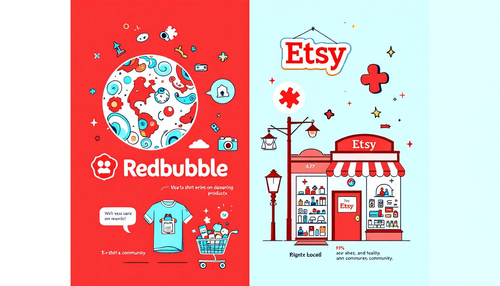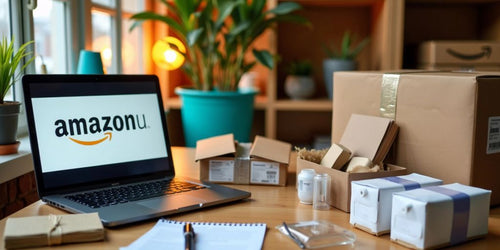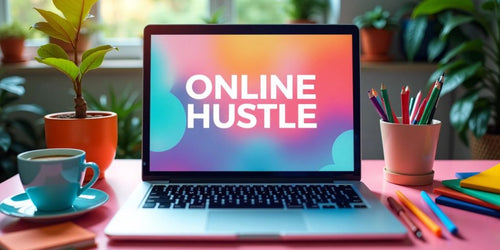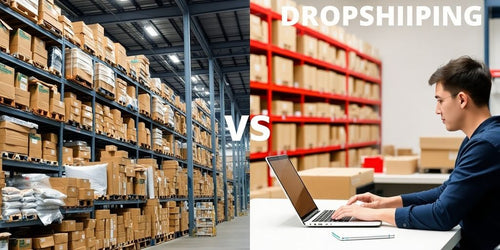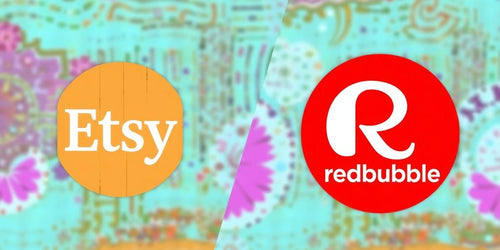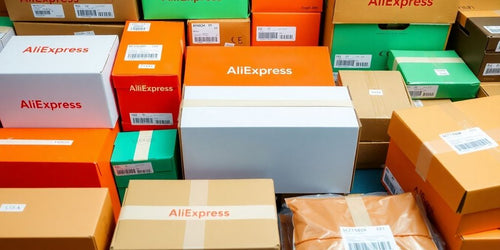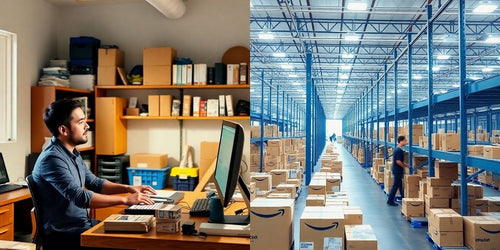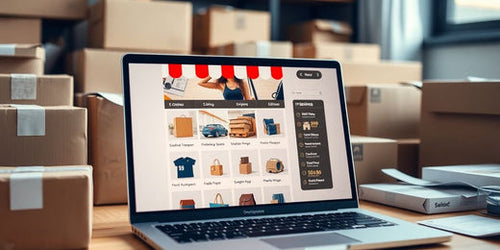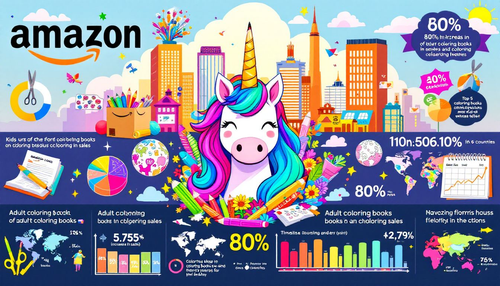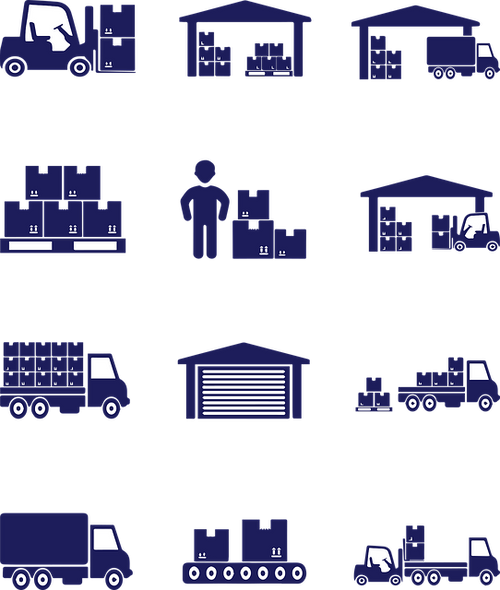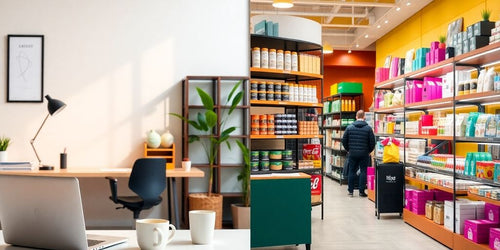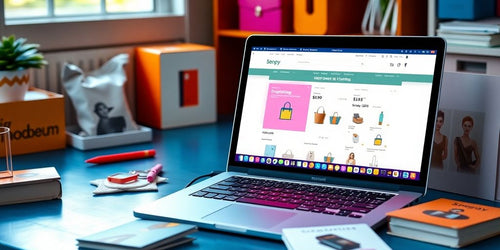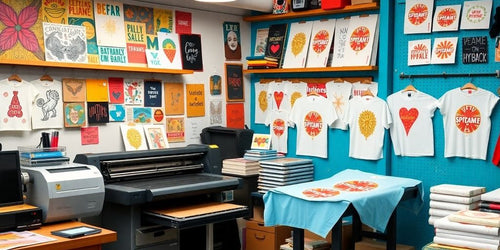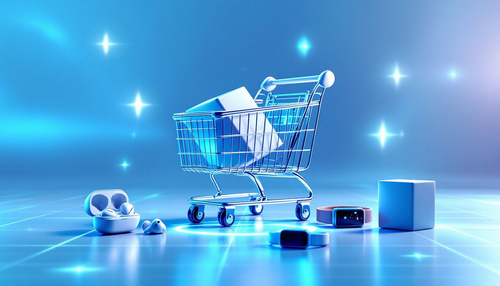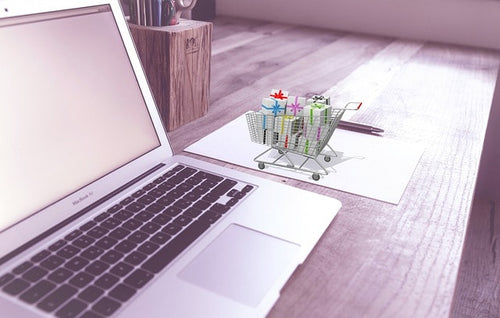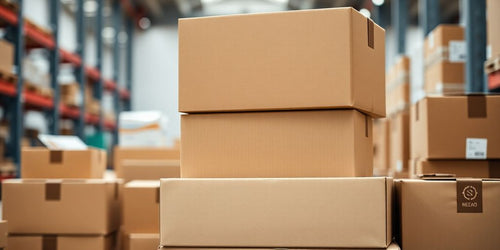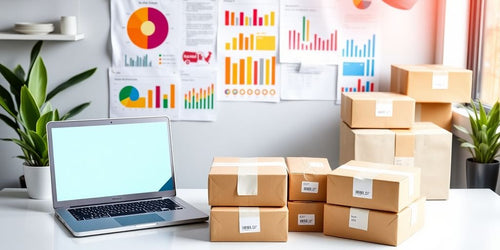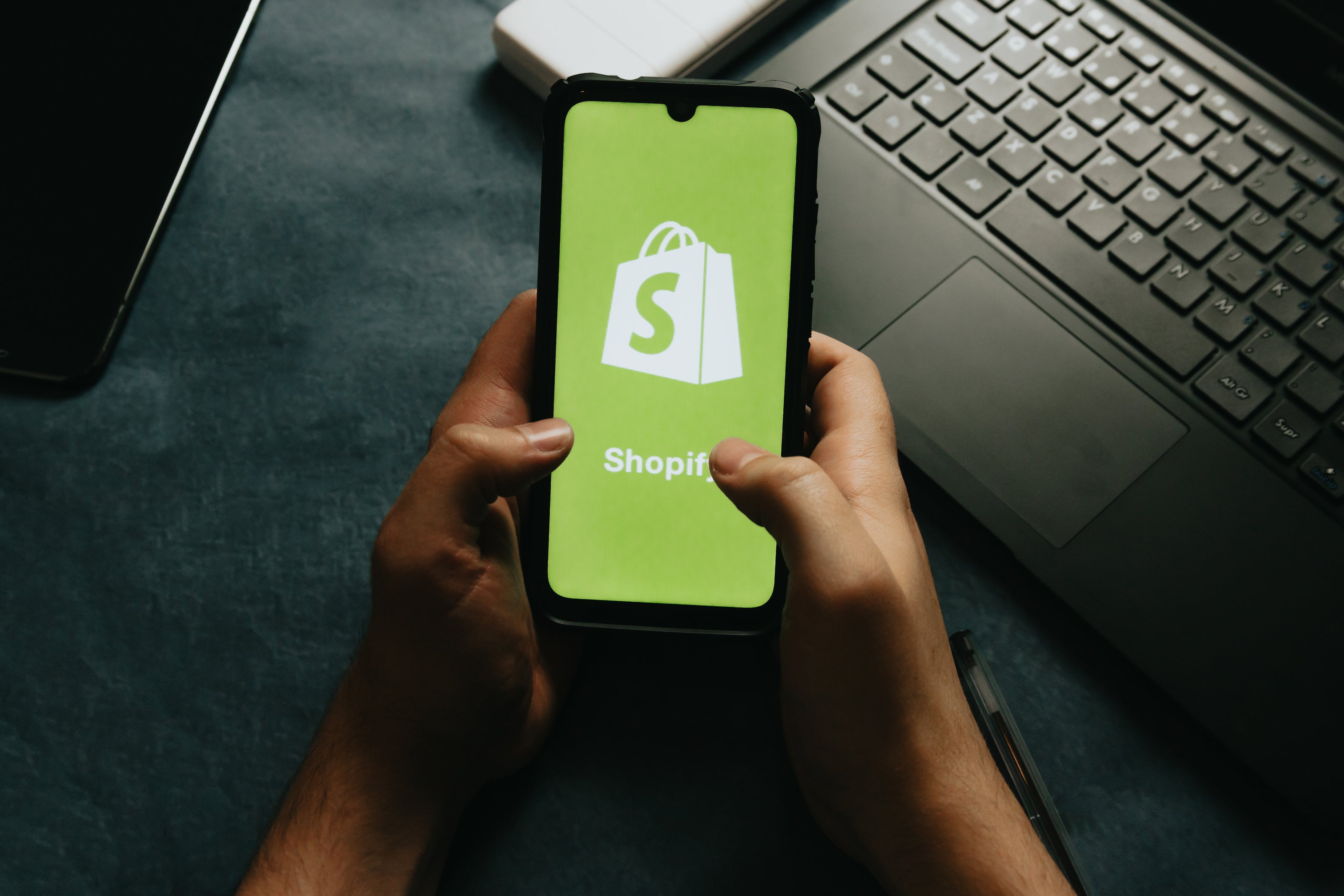
Amazon FBA vs. Dropshipping: Which One Should You Choose? A short summary.
Share
Amazon FBA vs Dropshipping which is better?
There’s no one best way between Amazon FBA and dropshipping. Each one has good and bad sides. The right choice depends on what you need and what works best for you.
Amazon FBA (Fulfillment by Amazon)
Good things:
- Your products can be sold to Amazon Prime customers, who buy a lot.
- Your item might show up first in search, which means more people see it.
- Amazon stores, packs, and ships your stuff, so you don’t have to.
- People trust Amazon, so they may feel better buying your product.
- You might sell more because of fast shipping and more visibility.
Not-so-good things:
- You have to buy products first, which can cost a lot of money.
- Amazon charges you fees to store and ship your stuff.
- You might get more returns from customers.
- If your items sit too long in Amazon’s warehouse, you get charged extra.
Dropshipping
Good things:
- It’s cheap to start. You don’t have to buy products upfront.
- You can sell lots of different items without storing them.
- You can run your business from anywhere.
- As your store grows, it’s easier to add more products.
Not-so-good things:
- You might not make much money per sale.
- You don’t control the product, the shipping speed, or customer service.
- If your supplier messes up, your business gets hurt.
- Shipping can be slow, which may upset customers.
In short, Amazon FBA is good if you have money to invest and want help with shipping. Dropshipping is better if you want to start small and don’t want to handle products yourself. It depends on what works best for you.
Main Article - my experience
I have been in e-commerce for 10+ years now and always get asked by beginners where to start - Amazon FBA vs dropshipping?? Dropshipping vs FBA??? If you are thinking about starting an online business and have heard about Amazon FBA and dropshipping. They both sound pretty good, right? You can sell products online without having to handle a bunch of inventory in your garage. But how do you know which one is right for you? Let’s break it down in plain English in this short, easy to follow and to the point article.

What Is Amazon FBA?
Amazon FBA stands for “Fulfillment by Amazon.” Here’s how it works: you send your products to Amazon’s warehouses, and they take care of the rest. When someone buys your product on Amazon, they pick, pack, and ship it for you. They’ll even handle customer service and returns. It’s like having a giant company do all the heavy lifting while you focus on finding and selling great products.
What Is the Dropshipping Business Model?
Dropshipping is a bit different - a dropshipping store allows you to start an online business with minimal upfront investment and operational flexibility. With dropshipping, you don’t keep any inventory at all. Instead, when someone buys a product from your online store, you purchase it from a third-party supplier who then ships it directly to the customer. You never actually touch the product. You’re basically the middleman between the customer and the supplier.
Key Differences between Amazon FBA and Dropshipping
When it comes to choosing between Amazon FBA and dropshipping, understanding the key differences can help you make an informed decision for your ecommerce business. Here’s a closer look at how these two business models differ:
- Inventory Ownership: With Amazon FBA, you own the inventory and store it in Amazon’s warehouses, this means you have to purchase products in bulk and send them to Amazon. In contrast, with the dropshipping model, you don’t own any inventory. Instead, you partner with a dropshipping supplier who ships products directly to your customers. This eliminates the need for storage space and reduces upfront costs.
- Order Fulfillment: Amazon FBA takes care of the entire order fulfillment process. which includes picking, packing, and shipping products from Amazon’s fulfillment centers and they also handle customer service and returns, providing reliable customer support. On the other hand, with dropshipping, the supplier is responsible for order fulfillment. This means you rely on them to ship products to your customers which can sometimes lead to delays or errors.
- Customer Service: One of the significant advantages of Amazon FBA is that Amazon handles all customer service issues, including returns and refunds - this can save you a lot of time and hassle. In the dropshipping business model, you are responsible for handling customer service. While some dropshipping suppliers may offer support, ultimately, you are the face of your online store and must address any customer concerns.

Amazon FBA: Advantages and Disadvantages
Advantages of Amazon FBA
- Prime Shipping Perks: Your products are eligible for Amazon Prime, which means faster shipping and more visibility to millions of Prime members. This can lead to more sales.
- Amazon’s Trust Factor: People trust Amazon, so they’re more likely to buy from you if your product is “Fulfilled by Amazon.”
- Customer Service and Returns: Amazon handles all customer service and returns, which is a huge time saver.
- Storage and Shipping: No need to worry about storing inventory or dealing with shipping. Amazon does it all.
Disadvantages of Amazon FBA
- Fees, Fees, Fees: Amazon’s services aren’t free. You’ll pay for storage, fulfillment, and other fees, which can eat into your profits.
- Competition: You’re competing against tons of other sellers on Amazon, including Amazon itself in some cases.
- Less Control: You’re at the mercy of Amazon’s rules and policies. If they change something, you have to adapt, like it or not.
- Upfront Costs: You need to buy inventory in bulk and send it to Amazon, which means you need some cash upfront.

Dropshipping: Advantages and Disadvantages
Advantages of Dropshipping
- Low Startup Costs: Since you don’t need to buy inventory upfront, you can start with very little money.
- No Inventory Hassles: You don’t have to store products, worry about shipping, or deal with packaging. Your supplier handles all of that.
- Wide Product Selection: You can offer a wide range of products without worrying about stocking them. If something doesn’t sell, you’re not stuck with it.
- Flexibility: You can run your business from anywhere, as long as you have an internet connection.
Disadvantages of Dropshipping
- Lower Profit Margins: Because you’re paying your supplier for each product sold, your profit margins can be pretty slim.
- Supplier Issues: If your supplier screws up—like shipping the wrong item or delaying an order—it’s your reputation on the line, not theirs.
- Customer Service Challenges: Since you’re the face of the business, you have to handle all customer service issues, which can be tough if there’s a problem with the product or shipping.
- Less Control Over Quality: You don’t get to see the product before it reaches the customer, so you’re trusting your supplier to deliver quality every time.

Factors to Consider: Investment, Risk, Scalability, and Control
When deciding between Amazon FBA and dropshipping, it’s essential to consider several factors, including investment, risk, scalability, and control. Here’s how these factors play out in each business model:
- Investment: Amazon FBA requires a significant upfront investment. You need to purchase inventory in bulk and pay for storage in Amazon’s warehouses. This can be a barrier for those with limited funds. Dropshipping, on the other hand, requires minimal upfront investment. You only pay for products after you’ve sold them, making it a more accessible option for beginners.
- Risk: With Amazon FBA, you bear the risk of unsold inventory. If your products don’t sell, you’re stuck with the costs. Dropshipping carries less risk because you don’t purchase inventory until you’ve made a sale. This means you’re not left with unsold products, reducing financial risk.
- Scalability: Amazon FBA can be highly scalable. Amazon’s fulfillment centers can handle large volumes of orders, allowing you to grow your business quickly. Dropshipping can be more challenging to scale. Your growth depends on your supplier’s capacity to fulfill orders, which may be limited.
- Control: Amazon FBA offers more control over the order fulfillment process. You can monitor inventory levels, track orders, and ensure timely delivery. With dropshipping, you have less control. You rely on your supplier to handle fulfillment, which can lead to inconsistencies in shipping times and product quality.
Tips for Success with Amazon FBA and Dropshipping
Whether you choose Amazon FBA or dropshipping, here are some tips to help you succeed in your ecommerce business:
Dropshipping vs FBA - Which One Should You Choose?
Ultimately, the choice between dropshipping and Amazon FBA depends on your business goals, resources, and preferences. Here are some scenarios to consider:
- Limited Upfront Investment: If you have limited funds and want to start an online business quickly, dropshipping may be the better choice. It requires minimal upfront investment and allows you to test different products without significant financial risk.
- Scalability: If you have a larger upfront investment and aim to build a more scalable business, Amazon FBA might be the way to go. Amazon’s fulfillment centers can handle large volumes of orders, making it easier to grow your business.
- Control Over Fulfillment: If you want more control over the order fulfillment process and customer service, Amazon FBA offers that advantage. You can monitor inventory levels and ensure timely delivery, which can enhance customer satisfaction.
- Minimizing Risk: If you prefer to minimize risk and focus on marketing and sales, dropshipping could be a better fit. Since you only pay for products after they are sold, you’re not left with unsold inventory, reducing financial risk.
By considering these factors and tips, you can make an informed decision about which ecommerce business model is best for you. Both Amazon FBA and dropshipping have their pros and cons, so choose the one that aligns with your goals and resources.
In conclusion - it really depends on what you’re looking for in a business. If you’re ready to invest some money upfront and want to leverage Amazon’s massive customer base, FBA might be the way to go. It’s great for scaling quickly and taking advantage of Amazon’s Prime shipping. However, if you’re starting on a shoestring budget and want to minimize risk, dropshipping could be a better fit. It offers more flexibility and lower startup costs, but it comes with its own set of challenges, like slimmer margins and less control over the customer experience.
In the end, both Amazon FBA and dropshipping can be lucrative if done right. It’s all about finding the right approach for your goals, budget, and lifestyle. So take a deep breath, do your research, and pick the path that feels right for you. Happy selling!

Further Reading
Check out the following articles to help you on your e-commerce journey:













